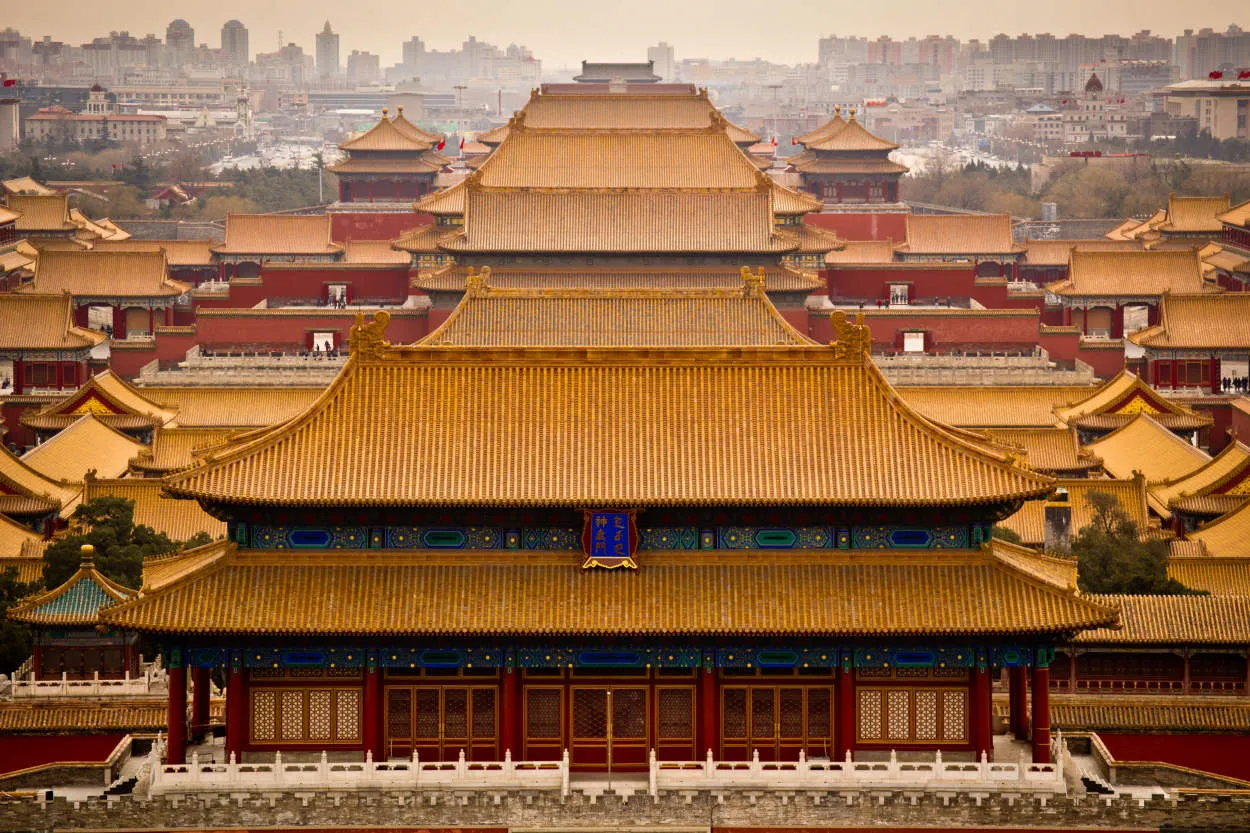Discover the grandeur and splendor of Beijing’s imperial past as we delve into the captivating history of the Forbidden City. Step inside the opulent palaces, stroll through magnificent courtyards, and uncover the secrets that lie within the heart of China’s ancient capital.
Touring the Forbidden City
The Forbidden City, located in the heart of Beijing, is a historical and cultural treasure that holds significant importance in China’s imperial past. Built during the Ming Dynasty in the 15th century, it served as the palace for emperors and their households for over 500 years.
Today, the Forbidden City is open to the public, offering a fascinating opportunity to immerse oneself in China’s rich history. As you enter through the imposing Meridian Gate, you’ll be greeted by the vastness of the palace complex, encompassing 980 buildings spread over 180 acres.
Exploring the city requires walking along the central axis, which divides the complex into two main sections: the Outer Court and the Inner Court. The Outer Court, characterized by large squares and majestic halls, was where the emperor conducted grand ceremonies and addressed his subjects. Here, you can marvel at the Hall of Supreme Harmony, the Hall of Central Harmony, and the Hall of Preserving Harmony, all showcasing exquisite architectural design.
In contrast, the Inner Court was strictly reserved for the emperor, his empress, and the imperial concubines. This section offers a glimpse into the private lives of the imperial family, with highlights including the Palace of Heavenly Purity, the Hall of Union, and the Palace of Earthly Tranquility.
As you walk through the courtyards and admire the intricately decorated buildings, take a moment to appreciate the symbolic elements found throughout the Forbidden City. From the mythical creatures guarding the entrances, such as lions and dragons, to the vibrant colors and intricate patterns adorning the roofs and walls, each detail carries deep cultural significance.
To make the most of your visit, consider joining a guided tour or hiring an audio guide. These options provide valuable insights into the history, architecture, and stories behind the Forbidden City, enriching your experience and helping you to fully appreciate its magnificence.
Exploring the Forbidden City is like stepping back in time, allowing you to witness the opulence and grandeur of China’s imperial past. So, if you find yourself in Beijing, don’t miss the opportunity to tour this extraordinary UNESCO World Heritage Site.
Understanding Chinese Imperial History
Chinese imperial history holds a significant place in the country’s rich cultural heritage. One of the most remarkable landmarks that depict this rich history is the Forbidden City in Beijing.
The Forbidden City, also known as the Palace Museum, served as the imperial palace during the Ming and Qing dynasties. Spanning over 180 acres, it is the largest palace complex in the world, boasting intricate architecture and breathtaking beauty.
Constructed in the early 15th century, the Forbidden City housed emperors and their families for nearly 500 years. It served as the political and ceremonial center of the Chinese government, symbolizing the supreme power and authority of the ruling emperors.
Within the vast compound, visitors can explore various sections, each with its distinct significance. The Outer Court, consisting of impressive structures like the Hall of Supreme Harmony and the Hall of Preserving Harmony, hosted grand ceremonies and affairs of state. The Inner Court, on the other hand, comprised the magnificent Imperial Garden and the living quarters of the emperor and his concubines.
Walking through the Forbidden City, one cannot help but admire the intricate details of its architecture and the opulent decorations that reflect the imperial aesthetic preferences of different dynasties. The imperial yellow roof tiles, the carved dragon motifs, and the sprawling courtyards all contribute to its grandeur.
Today, the Forbidden City stands as a UNESCO World Heritage Site and a significant tourist attraction, attracting millions of visitors each year. It serves as a window into China’s imperial past, offering a glimpse into the splendor and majesty of the imperial era.
By exploring the Forbidden City and delving into Chinese imperial history, one can gain a deeper understanding of the country’s rich cultural legacy, the power dynamics of different dynasties, and the symbols of imperial authority that shaped China’s history.
Nearby Attractions
When visiting Beijing’s Forbidden City, be sure to explore the following nearby attractions:
Tiananmen Square
A short walk from the Forbidden City, Tiananmen Square is one of the largest public squares in the world. It holds significant historical and cultural value as the site where major events in Chinese history took place.
Jingshan Park
Located just north of the Forbidden City, Jingshan Park offers a stunning panoramic view of Beijing and the Forbidden City from its hilltop. It is also home to beautiful gardens, historic pavilions, and a peaceful environment.
The Temple of Heaven
About 6 kilometers south of the Forbidden City, the Temple of Heaven is an architectural masterpiece and a UNESCO World Heritage site. It was once used by emperors for annual ceremonies to pray for good harvests.
The Summer Palace
A little further northwest from the Forbidden City, the Summer Palace showcases imperial grandeur with its exquisite gardens, magnificent buildings, and Kunming Lake. It is a retreat that was once used by emperors to escape the summer heat.
The Great Wall of China
No visit to Beijing is complete without a trip to the Great Wall. While not in immediate proximity to the Forbidden City, it is an iconic attraction that is easily accessible from the city. Mutianyu and Badaling are popular sections located nearby.
Conclusion
As one of the most iconic symbols of Chinese history and culture, Beijing’s Forbidden City stands as a testament to the grandeur of the country’s imperial past. With its intricate architectural design, rich historical significance, and vast collection of cultural artifacts, the Forbidden City continues to captivate visitors from around the world, providing a glimpse into China’s imperial heritage.

